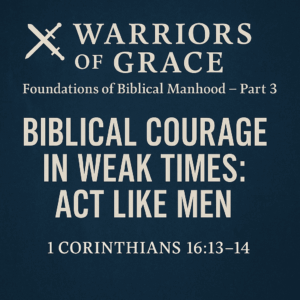⏱️ Estimated Reading Time: 9 min read
A friend posted on Instagram a large stack of Bible commentaries with the caption, “my light reading this week.” I’ve often scorned such because they can intimidate and discourage believers who struggle to do more than read the Scriptures. Still, reading the Bible alone won’t carry you through a passage such as this:
Matthew 15:21-28, “And Jesus went away from there and withdrew to the district of Tyre and Sidon. And behold, a Canaanite woman from that region came out and was crying, “Have mercy on me, O Lord, Son of David; my daughter is severely oppressed by a demon.” But he did not answer her a word. And his disciples came and begged him, saying, “Send her away, for she is crying out after us.” He answered, “I was sent only to the lost sheep of the house of Israel.” But she came and knelt before him, saying, “Lord, help me.” And he answered, “It is not right to take the children’s bread and throw it to the dogs.” She said, “Yes, Lord, yet even the dogs eat the crumbs that fall from their masters’ table.” Then Jesus answered her, “O woman, great is your faith! Be it done for you as you desire.” And her daughter was healed instantly.”
While we are glad Jesus healed her daughter, what’s with him ignoring her then calling her a dog?
You cannot glean answers to those questions from a light reading of the text, and many of us don’t have hours every day to dig deeper into God’s Word much as we’d like to. So how can we make the most of the time we do have with God’s Word? Before you break out the 6-pack Bible commentary set, let’s take another approach. If you can carve out 30-45 minutes at another part of your day, once or twice a week, you can do some prep work to reinforce what you read in your devotions.
- Get a copy of the passage you are reading, so you can mark it up: Say you plan to read through the book of Matthew during your morning devotions. Make a copy of the passage and then paste it into Microsoft Word with double spaced margins. When you come to a passage in your reading that stumps you such as Matthew 15:21-28, mark it as a place to go back to when you have more time. For now, jot down your initial reactions when you first encounter it. One helpful resource comes from Crossway who makes Scripture journals for precisely this purpose. You can purchase them as you need them.
- Read the entire book through in one sitting. Get a feel for the bigger picture as you take in smaller snippets in the morning. Read it again later in the week.
- Acquire some basic information on the book in question (readily available in most study Bibles). You can jot this down in your mark up version to the book to have at the ready.
- Who wrote the book?
- To whom was the book written?
- What style of book is it?
- What is the main theme?
Remember the point here is to keep the focus of your reading what the author intended to be the main point, and that isn’t always what we might gravitate to at first.
- Make an outline of the book. Yes, you can use the one provided in a study Bible, but it will greatly help flex your brain cells for you to make a stab at making your own outline and do a comparison. Remember the outlines you did in school? Something like that will do. The goal is to look at the book as a whole.
- Mark references to place and pay attention to your maps provided in your Bible— sometimes they are a big deal.
- Since this scene is in one of the four Gospels, we can look to see if this scene is recorded elsewhere in Scripture. Our footnotes point us to Mark. We’ll want to look at that passage later to see what else we might learn about this encounter.
Comprehension— What The Text Says
Try paraphrasing what you’ve read. It’s okay to get it wrong. You’re not writing a commentary for others to read. You are wrestling with the text, stretching your mind as you do. If you later consult trusted commentaries, you will find them far more valuable for doing this exercise.
In reading Matthew through, you encountered this passage once more, in context with the entire book. You may have also noticed, via your map, Jesus and his disciples aren’t in Kansas anymore. You also learned that Jesus was seeking to get away from the crowds. Still, a Canaanite woman finds him anyway. I heard a preacher say, “We don’t know how this woman found him.” But any momma who has ever had a sick baby and felt the tug of desperation has a clue. You give her a glimmer of hope that Someone might be the key to healing her daughter and, suddenly, the FBI or the Secret Service and all their tracking devices will have nothing on her. She found him because she was desperate. And while Jesus’ plan was to get away from public ministry, our God remains very intentional in everything he does. The encounter with this mom wasn’t an interruption in his plan, but part of his plan. And when desperate sinner meets ultimate Savior, she says in Matthew 15:22:
“Have mercy on me, O Lord, Son of David; my daughter is severely oppressed by a demon.”
We can’t dismiss the word “Lord,” here as a generic term, because she clarifies it with, “Son of David”. Because you read Matthew through, you know this is long before Peter makes the big announcement, “Thou are the Christ.” There haven’t been palm branches laid before Jesus on the way to Jerusalem. Yet, this Canaanite woman knows to whom she speaks. Here is a living demonstration that theology matters. She persisted when it seemed he would not answer because she knew who he was, and there was no other hope for her daughter. So, pleading in tears, hoping he ignores the disciples who are urging him to send her away, we read in Matthew 15:24 the thing that kept us up last night:
He answered, “I was sent only to the lost sheep of the house of Israel.”
What?! No Gentiles allowed? We can barely get our mind around these words, but that’s what Jesus said. We’re kind of hoping, maybe in the Greek it means something completely different.
Interpretation—What The Biblical Text Means
You can be helped sometimes by looking at other translations, but in this instance, we’re left with similar harsh sounding words. What does this passage tell us about God? Be patient. Don’t get in a hurry to draw too many conclusions too soon. Keep reading.
Still, our desperate Canaanite momma who doesn’t seem to have a prayer, won’t let Jesus go until he blesses her.
“But she came and knelt before him, saying, “Lord, help me” (Matt 15:25).
Sometimes when we’re out of our mind in pain, our prayers come down to three words, “Lord help me.” Here she is, down to that, prostrate before Christ, calling him such, and the response is . . .
“And he answered, “It is not right to take the children’s bread and throw it to the dogs” (Matt 15:26).
Ouch. Now, here the parallel passage is helpful. It adds one phrase with a key word.
“Let the children be satisfied first” (Mark 7:27).
First. If there is a first, then there must be a second. She doesn’t have time to be insulted. She has one mission: her daughter must be healed, and, dog or no dog, she knows she is looking at her only chance to see her daughter cured. So, she tries again:
“. . . Yes, Lord, yet even the dogs eat the crumbs that fall from their masters’ table” (Matt 15:27).
Ligon Duncan, preaching through the Mark passage, translates the woman’s response as, “So you’re say’n there’s a chance!” We know that the Holy Spirit revealed to this woman that Jesus was, indeed, the Lord. We know that this meeting was arranged by his Sovereign will. And here, persistently praying in front of the only Source of her hope, through silence, then what seems like “no”, and finally, “I’ll take the crumbs, Lord, because that’s all my daughter will need to be healed.” Three times she’s called him “Lord”, and now she has told him, “I’ll take the crumbs. That will do fine. Crumbs from your table over bread from anywhere else.”
You know he looked her in the eye when he said those life-giving words, “O woman, great is your faith! Be it done for you as you desire.” And her daughter was healed instantly.
Healed without a word, without going to see her. Instantly. Only crumbs needed? Whew!
This woman, at first glance, appears to be spineless and groveling. But, now we see the depth of her understanding and her boldness to press the God of all creation, even when he appears to ignore her and then tell her “no”.
Our understanding of Jesus also changes when we slow down and take a longer look. Some things cannot be taught by mere words. They must be shown and experienced. That is why Jesus told so many parables. Our hearts are hard. Demonstration trumps narrative. Doubtless, the disciples cringed a little when Jesus used their words to appear to dismiss this woman. But, that was never his plan. Here, the disciples had the opportunity to see what great faith looked like, even when sorely tested.
Slowing down and investing a little more time in the Word can help expand your understanding and connect your heart deeper to the text. Want to go even further in learning Bible study habits? Women of the Word: How to Study the Bible with Both Our Hearts and Our Minds, by Jen Wilkin is an invaluable resource.



